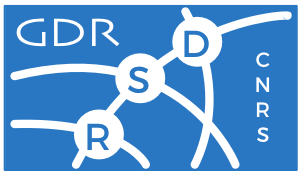Panel
Disasters can strike anywhere at any time and may strike your company or the community you live. Disasters may be man-made such as terrorist attacks potentially through large security system attacks or may be technological such as power grid blackouts, dam failures, nuclear accidents, etc. Disasters may be natural phenomenon (hurricanes, earthquakes, tsunami, tornados, floods, forest fires, or even pandemics). Disasters can affect thousands of people, multiple communities, entire countries, or just one company.
When a catastrophic disaster happens in a region, the population can lose completely their means to communicate - wireless and wireline - until the telecom networks can be restored. That isolation can put lives and livelihoods at risk especially under disaster conditions.
The panel objective is to address how the recent advances in network control and system recovery can support the management of "Disasters" within network contingency planning and can restore user communications following massive network infrastructure destructions. The discussion will try to provide a comprehensive state of the art in network systems, control and management architectures, security, standardization and regulation for Network Disaster Management and Recovery.
The items that can be addressed are and are not limited to:
-
What are the needs of network infrastructure emergency preparedness for global recovery? Which essential actions are needed to be properly prepared for emergency?
-
How the recent advances in elastic optical network systems (spectrally and/or spatially flexible systems) can overcome complete communication outages?
-
Are programmatic transport networks (SDN) and network virtualization (NFV) able to integrate the control application of the network disasters and their recovery? How these recovery procedures can synergize for safe wireless and wireline ad-hoc network infrastructures?
-
What are the security requirements from large institutions e.g. governments, multi-national business organizations, to small and mid-size enterprises, the Telecom network infrastructures must face to?
-
What is the impact on the CAPEX / OPEX required to set-up and/or maintain Emergency Network Operations Centers to recover from Network Disasters? What are the efforts to maintain such network disaster plans?
-
How are governments and public institutions (e.g. Europe, USA/Canada, etc.) organized to manage and recover from Telecom Network Disasters? What are the agreements that must be in place to overcome network disasters?
-
How are the members of standard bodies organized to address network disaster recovery? Are recent network control architectures considering the challenges of disaster recovery plans?
- From the missing/still to be developed «Network Disaster Management and Recovery» features identified for Telecom networks, what are the next steps the R&D community should envision?
Panel Speakers
Panel introduction- Maurizio Casoni (Univ. of Modena, Italy).
- Chidung Lac (Orange Labs, France).
- Hiroshi Saito (NTT, Japan).
- Dominique Verchere (Nokia Bell Labs, France).
- Xinheng (Henry) Wang (Univ. West Scotland, UK).
Moderator: Dominique Verchere, Nokia Bell Labs, France.






